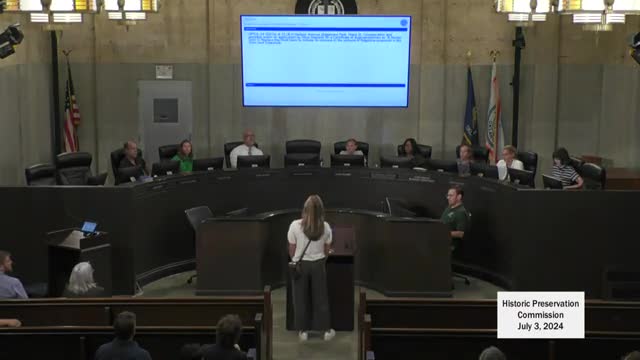Historic Neighborhood Faces Controversy Over Flagstone Sidewalk
July 04, 2024 | Other Public Meetings, Oklahoma City, Oklahoma County, Oklahoma

This article was created by AI summarizing key points discussed. AI makes mistakes, so for full details and context, please refer to the video of the full meeting. Please report any errors so we can fix them. Report an error »

In a recent meeting of the Edgemore Park Historic Preservation Commission, significant discussions arose regarding a proposed landscaping project at 3118 North Hudson. The application, initially approved in March for the removal of a lawn and the installation of drought-tolerant plants, faced scrutiny due to a revised site plan that included an extensive flagstone path.
Commission members expressed concerns that the new design, featuring a flagstone path measuring up to 9 feet wide in some areas, deviated from the historic character of the neighborhood. The Edgemore Park Historic Preservation Commission emphasized that sidewalks in the area must be constructed of concrete, unless historical precedents suggest otherwise. They argued that the proposed flagstone path could set a troubling precedent for future projects, potentially leading to a proliferation of non-compliant landscaping in the historic district.
During the meeting, a resident defended the use of flagstone, citing environmental benefits and cost-effectiveness compared to concrete. They argued that the design promotes sustainability by supporting pollinator habitats and enhancing soil health. However, several commissioners countered that while the ecological intentions were commendable, the aesthetic and historical integrity of the neighborhood must be preserved.
After extensive debate, a compromise was reached. The commission proposed that the applicant work with staff to modify the design, potentially reducing the width of the flagstone path and altering it to resemble stepping stones rather than a traditional sidewalk. This adjustment aims to maintain the character of the historic district while accommodating the homeowner's desire for a sustainable landscape.
The commission ultimately approved the application with conditions, allowing for further discussions on the design modifications. This decision reflects a balance between modern ecological practices and the preservation of historical aesthetics in the community.
Commission members expressed concerns that the new design, featuring a flagstone path measuring up to 9 feet wide in some areas, deviated from the historic character of the neighborhood. The Edgemore Park Historic Preservation Commission emphasized that sidewalks in the area must be constructed of concrete, unless historical precedents suggest otherwise. They argued that the proposed flagstone path could set a troubling precedent for future projects, potentially leading to a proliferation of non-compliant landscaping in the historic district.
During the meeting, a resident defended the use of flagstone, citing environmental benefits and cost-effectiveness compared to concrete. They argued that the design promotes sustainability by supporting pollinator habitats and enhancing soil health. However, several commissioners countered that while the ecological intentions were commendable, the aesthetic and historical integrity of the neighborhood must be preserved.
After extensive debate, a compromise was reached. The commission proposed that the applicant work with staff to modify the design, potentially reducing the width of the flagstone path and altering it to resemble stepping stones rather than a traditional sidewalk. This adjustment aims to maintain the character of the historic district while accommodating the homeowner's desire for a sustainable landscape.
The commission ultimately approved the application with conditions, allowing for further discussions on the design modifications. This decision reflects a balance between modern ecological practices and the preservation of historical aesthetics in the community.
View full meeting
This article is based on a recent meeting—watch the full video and explore the complete transcript for deeper insights into the discussion.
View full meeting
